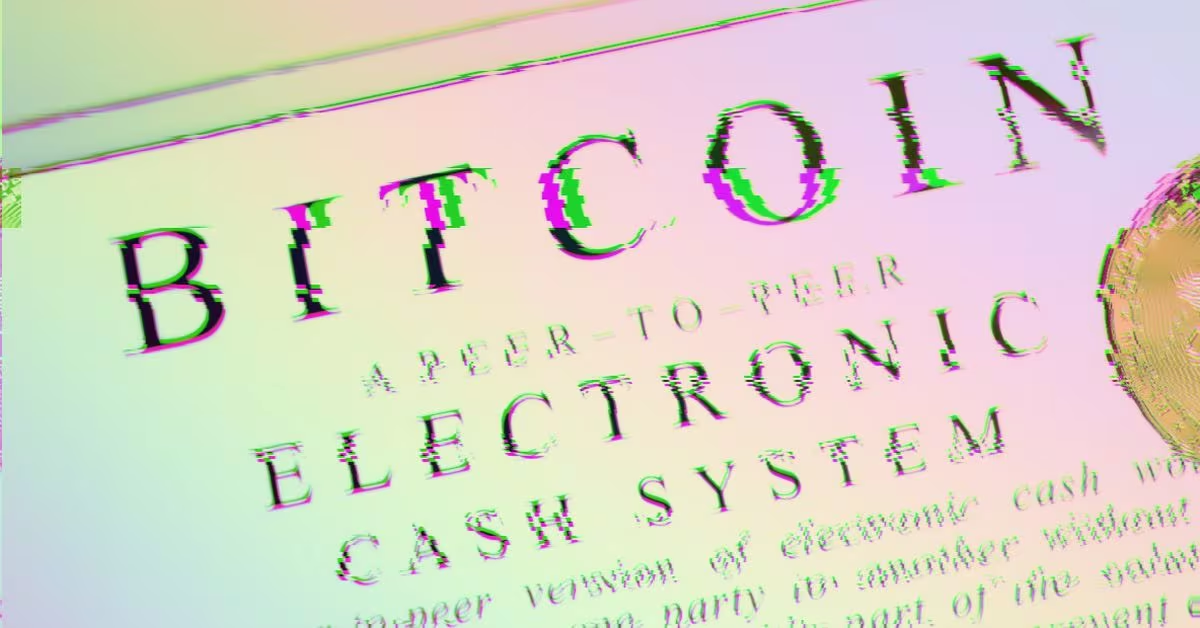PSE Trading Who is taking the risk for non-clearing DeFi protocols?
Assessing Risk The Responsible Party for Non-Clearing DeFi Protocols in PSE TradingAuthor: PSE Trading Analyst @Daniel Hua
Blockchain has developed to this day, and the DeFi sector has become the most mature. Among them, lending is one of the core components. In bull markets, lending is often the engine that drives the market. Investors will mortgage BTC, borrow USDT, and then use it to buy more BTC, thereby pushing up the market and earning more profits. However, as the cryptocurrency market cools down, the decline in BTC prices often leads to a cascade of liquidations, causing BTC prices to plummet. In order to achieve the goal of an “eternal bull market,” many “no liquidation” protocols have been introduced in the market. These protocols allow investors to enjoy excess profits without facing the risk of liquidation. This article will summarize several common “no liquidation” protocols in the market. Let’s start with the conclusion: the so-called “no liquidation” essentially transfers the risk, and while investors profit, someone has to bear the risk.
1. Differences in “No Liquidation” Protocols
1.1. “Liquidation” in Advance using other Collateral Assets
Thorchain is a typical representative of this approach. Thorchain is a cross-chain protocol that establishes various asset pools on different chains, such as BTC/RUNE (Rune is the platform’s native coin). When users need to cross assets, they need to exchange BTC on the Arb chain for Rune, and then exchange Rune for ETH on the OP chain. In the lending process, BTC needs to be exchanged for Rune > Rune is burned to generate Thor BTC (synthetic asset) > Thor BTC is exchanged for Thor TOR (official stablecoin) and then burned to mint Rune > Rune is finally exchanged for USDT. During this process, Rune will ultimately experience deflation because it is burned to generate USDT, and users need to pay each Swap fee to LP. Therefore, lending does not charge interest. Furthermore, unlike traditional lending protocols, the users “collateralize” USDT and borrow USDT, so they do not need to worry about BTC’s price fluctuations and will never be “liquidated” or have already undergone “liquidation” in advance.
- Are all the short-term ETF benefits gone, and is the bull market over?
- The new situation of GMX V2 Increasing liquidity and the long-short imbalance of the GM pool under the influence of the Arbitrum STIP plan
- Binance refutes SEC lawsuit point by point, how does the US SEC respond?
If the protocol has no “liquidation” and no interest, the borrower can potentially never repay the loan. However, an extreme situation arises when a bull market arrives, and borrowers want to repay the loan to retrieve more BTC profits. The process is as follows: USDT is exchanged for Rune > Rune is burned to mint Thor TOR, Thor TOR is exchanged for Thor BTC, and then Rune is burned to swap back to BTC for repayment. In this process, Rune becomes the biggest variable. Minting Rune to retrieve the collateral BTC can lead to the creation of an “unlimited” amount of Rune if too many borrowers want to repay, ultimately causing a collapse.
Therefore, Thorchain sets a maximum amount of Mint, which is the debt limit, currently set at 500M, with native Rune being 485M, meaning that the maximum amount of Rune that can be Minted is 15M. Thorchain sets the value of the Lending Level to ultimately multiply to the number of Rune that can be burned, and based on the current price of Rune, the value of USDT that can be borrowed can be obtained.
In addition, the price of Rune compared to the price of BTC is also crucial for the success of the protocol. The two charts below show that when both BTC and Rune prices rise by 20%, users will Mint an additional 301 Rune for repayment, compared to the burned Rune during borrowing. However, when Rune price rises by 30%, no Rune will be Minted during repayment, and the protocol will still be in a deflationary state. Conversely, if BTC price rises far more than the increase in Rune price, the protocol will Mint more Rune, leading to a collapse in the mechanism. Once the Minted quantity is about to reach the upper limit, the protocol will increase the Collateral ratio to a maximum of 500%, forcing users to no longer borrow more USDT. Assuming the upper limit of 500M Rune is reached, the protocol will also terminate all loan repayment activities until the BTC price falls, without creating more Rune.
It is not difficult to see that only when the protocol keeps borrowing, it is advantageous for the protocol itself (deflation of Rune), but it cannot withstand large-scale repayments (inflation of Rune), so Thorchain’s model is destined to be small. If it wants to scale, it will be a tragedy like Luna 2.0. Secondly, because the loan amount is controlled through the collateral ratio, the CR of the platform is 200%-500%, much higher than traditional lending platforms like AAVE with 120-150%. The low capital utilization rate is also not conducive to the borrowing needs of mature markets.
1.2 Transferring the liquidation risk to Lenders
Cruise.Fi is a collateral lending platform that uses stETH as collateral and outsources the liquidation risk to other Lenders. As long as there are always users to “take over”, theoretically, there will be no liquidation, reducing the risk of liquidation for borrowers and allowing them to hold more positions. for “taking over” users, they can earn more returns (basic lending returns + additional ETH rewards).
Borrowing process: When a user collateralizes stETH, USDx is generated, which can be exchanged for USDC in the Curve pool using USDx, and the interest generated by stETH is ultimately given to the Lender. There are two methods to maintain the price of USDx.
1: When the USDx price is too high, some of the stETH earnings will be given to Borrowers to subsidize their high borrowing costs. 2: When the USDx price is too low, some of the stETH will be converted into borrowing costs and subsidized to Lenders.
So how does the project achieve non-liquidation? Here, assume that the collateralized ETH is $1500 and the liquidation price is $1000. When liquidation occurs, the platform will first lock the collateral (stETH), then transfer the stETH staking earnings to Borrowers to retain a portion of the original position. Positions exceeding the stETH earnings will be suspended. However, the downside of this approach is that when the ETH collateralization rate increases, it affects the stETH earnings and reduces the amount of positions that can be retained.
Regarding the positions that were supposed to be liquidated, the platform will generate Price Recovery Tokens (PRT). When ETH returns above the liquidation line, Lenders can exchange this portion of PRT for ETH at a 1:1 ratio. This adds an extra layer of ETH profits compared to traditional lending platforms, not just interest. Of course, if Lenders do not believe that ETH will rise above $1000, they can also sell PRT on the secondary market. The project is still in its early stages, with much data and the secondary market yet to be fully developed. The author would also make a bold prediction that if Lenders sell PRT on the secondary market, Borrowers can “reclaim” their positions at a lower price (compared to adding collateral) and also gain extra ETH profits in the future.
However, the project also has a downside. It can only thrive in a bull market (even in a major correction, there will be holders who “believe” in ETH to provide liquidity). If a bear market comes and market sentiment drops to freezing point, liquidity will dry up, posing a significant threat to the platform. Moreover, there may not be many users willing to be Lenders on the platform because the protocol transfers all the risk to the Lenders.
1.3 Interest Coverage of Borrowing Rates
The wave of interest rate hikes by the Federal Reserve has also led to a group of RWA “non-liquidation” protocols, with the most noteworthy and largest-scale being T Protocol. STBT is a tokenized version of US Treasury bonds issued by MatrixDock, a US institution, pegged 1:1 with US Treasury bond yields. TBT is a wrapped version of STBT issued by T Protocol, which distributes US Treasury bond earnings to platform users through a rebase method. Users only need to deposit USDC to mint TBT and enjoy US Treasury bond profits.

The biggest highlight is that the interest charged by the platform is always lower than the US Treasury bond yield. Assuming the US Treasury bond yield is 5%, the platform charges approximately 4.5% interest to lend to the Lender, with 0.5% of it as a fee. This way, MatrixDock can collateralize US Treasury bonds to provide interest-free loans in the form of wrapped tokens. But how to solve the problem of non-liquidation? Essentially, the platform also uses the logic of collateralizing the US dollar to lend US dollars, without being affected by assets like BTC. Currently, the LTV is 100%. When MatrixDock collateralizes a million US dollars in US Treasury bonds, it can lend out a million stablecoins. When users want to retrieve their stablecoins, MatrixDock will liquidate its owned US Treasury bonds and pay the equivalent amount to the users. Larger users may have to wait for three working days for the settlement.
However, there are also risks involved. Once MatrixDock receives the loan, if it engages in high-risk investments or other such activities, there is a risk of not being able to redeem the US Treasury bonds. All trust relies on the platform and the US Treasury institutions, which have regulatory blind spots and lack transparency. This is also why the process of T Protocol seeking collaboration with other US Treasury institutions has become exceptionally slow, with limitations. Furthermore, as future macroeconomic policies become looser, the US Treasury bond yield will start to decline. When the interest becomes less, users will have no reason to deposit on this platform and will turn to other lending platforms.
2. Summary and Thoughts
The author believes that most non-liquidation protocols so far are “pseudo-non-liquidation,” which means they transfer the risk from the Borrowers to other entities. For example, Thorchain transfers the risk to the protocol itself and the holders of Rune tokens, Cruise.Fi transfers the risk to the Lenders, and T Protocol transfers the risk to opaque regulation. It is easy to see that these types of protocols all have a pain point: it is difficult to achieve economies of scale because the lending itself is unfair to one party, and the short-term “high” returns that come with this unfairness are difficult to sustain, making it unstable for users. Ultimately, users will still choose traditional lending platforms like AAVE, accepting liquidation while embracing fairness. The essence of liquidation is that the assets are insufficient to cover the debts. Any asset will have moments of volatility, and there is no such thing as risk-free investment in the world. As long as there is volatility, there will be moments when the assets are insufficient to cover the debts. Traditional finance has not “designed” a perfect risk-free investment since its inception, and the high volatility nature of the cryptocurrency world makes it even less likely. “Non-liquidation” protocols may reappear in the public eye in a relatively “stable” manner, but there will always be a party that pays a painful price.
We will continue to update Blocking; if you have any questions or suggestions, please contact us!
Was this article helpful?
93 out of 132 found this helpful
Related articles
- In-depth Analysis of Modular Smart Contract Account Architecture and Challenges
- Cryptocurrency Market Weekly Summary (11.11-11.17) Continuous net inflow of funds, BTC ecosystem remains hot
- Weekly Preview | Blur may initiate the second season airdrop; Avalanche (AVAX) will unlock tokens worth nearly $200 million on November 24th
- a16z’s in-depth analysis of the current development, business boundaries, and regulatory innovations of Web3
- Is it really feasible for Polkadot to explore reducing inflation?
- CEO suddenly exits, where is OpenAI heading?
- In-depth analysis of the core mechanism of Celestia Under the modular trend, what should the estimated TIA be?













